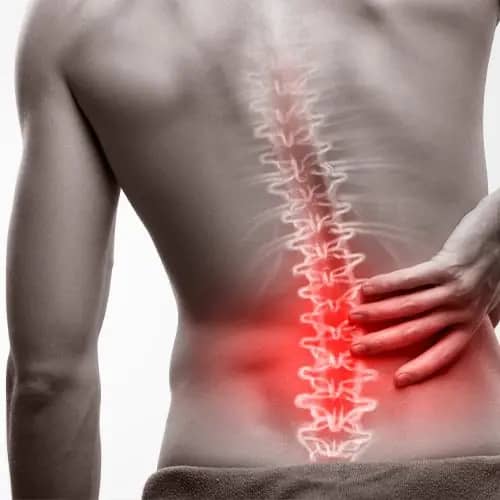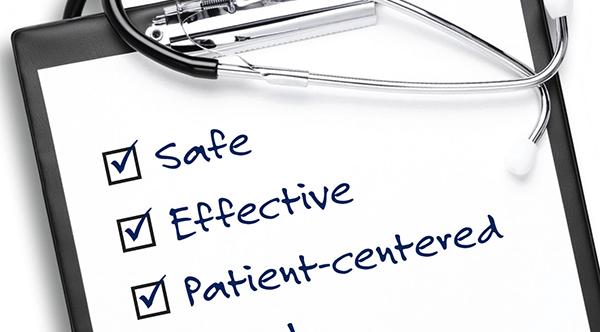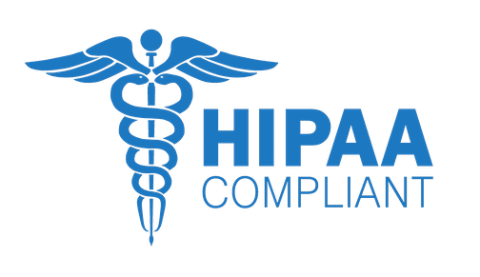
OVERVIEW
Are you tired of dealing with lower back pain that just won’t seem to go away? You’re not alone. Lower back pain is a common issue that affects millions of people worldwide. Whether it’s due to poor posture, a sedentary lifestyle, or an underlying medical condition, finding relief for your lower back pain is crucial for improving your overall quality of life.
At MYInstantMD, we can help you get relief from our lower back pain. Get started now with your visit. Our online doctors are ready to help!
Available in 50 states. No insurance needed.
Understanding Lower Back Pain
Lower back pain is a prevalent issue that can range from a minor inconvenience to a debilitating condition. It arises from various factors such as poor posture, muscle strain, or spinal health concerns. Online lower back pain treatment presents a viable and effective alternative, providing access to personalized care and ongoing support. However, it is critical to seek immediate medical attention for severe pain
Lower back pain can significantly undermine one’s quality of life, manifesting in various intensities from mild discomfort to incapacitating agony. Neglecting the symptoms of back pain and forgoing medical consultation may precipitate further health deterioration. Below, we explore the potential consequences of untreated lower back pain and the importance of timely intervention.
Common Causes of Lower Back Pain
Lower back pain can be caused by a number of factors, each contributing in different ways to discomfort and mobility issues.
Muscle Tension and Ligament Strain
Repetitive heavy lifting or a sudden awkward movement can strain back muscles and spinal ligaments. If you’re in poor physical condition, constant strain on your back can cause painful muscle spasms.
Bulging or Ruptured Discs
Discs act as cushions between the bones (vertebrae) in your spine. The soft material inside a disc can bulge or rupture and press on a nerve, leading to back pain. However, you can have a bulging or ruptured disc without back pain. Disc disease is often found incidentally when you have spine X-rays for some other reason.
Degenerative Disc Disease
With age, intervertebral discs can deteriorate, leading to pain and stiffness in the lower back. This condition is a natural part of aging, but can vary in severity among individuals.
Spinal Stenosis
Spinal stenosis, which involves the narrowing of spaces within the spine, can exert pressure on nerves, leading to pain that requires specific treatment approaches.
Arthritis
Osteoarthritis can affect the lower back. In some cases, arthritis in the spine can lead to a narrowing of the space around the spinal cord, a condition called spinal stenosis.
Skeletal Irregularities
Back pain can occur if your spine curves abnormally. Scoliosis, a condition in which your spine curves to the side, also may lead to back pain, but generally only if the scoliosis is quite severe.
Osteoporosis
Your spine’s vertebrae can develop compression fractures if your bones become porous and brittle.
Poor Posture and Sedentary Lifestyle
Spending hours in front of a computer, sitting in an improperly adjusted chair, or driving for long periods without taking breaks can contribute to lower back issues. A sedentary lifestyle may weaken the muscles supporting the spine, leading to pain.
Acute lower back pain usually lasts for a few weeks and can be treated with home remedies. However, chronic pain that persists for longer periods may require medical attention and a more comprehensive treatment plan.
Available in 50 states. No insurance needed.
Available Treatment Options
The advent of online therapy and virtual healthcare platforms has revolutionized access to medical care for those with lower back pain, offering:
- Convenient access to professional consultations without the need for travel
- The ability to connect with specialists who may not be available locally
- Opportunities for continuous care and support through digital means
- Enhanced privacy and comfort, as individuals can receive care in their own homes
The integration of online therapy into healthcare services has made it significantly easier for people to seek and receive timely assistance for lower back pain.
The treatment landscape for lower back pain is diverse, encompassing a range of methodologies from medication to hands-on therapies. The choice of treatment is typically tailored to the individual’s specific pain cause and severity. Here we outline the most prevalent treatment modalities for lower back pain.
Nonsteroidal anti-inflammatory drugs (NSAIDs) are a first line of defense against lower back pain, offering:
- Rapid relief for mild to moderate pain symptoms
- Reduction in inflammation at the source of discomfort
- Accessibility as over-the-counter options for patients
- A well-understood mechanism that blocks pain-inducing prostaglandins
Despite their efficacy, it is important to use NSAIDs as directed to avoid potential side effects.
Muscle relaxants serve as a critical treatment avenue for those experiencing spasms and muscle tension, providing:
- Reduction in painful muscle contractions
- Aiding in overall muscle relaxation and comfort
- Relief that enables patients to partake in physical therapy exercises
- Short-term relief that can be a stepping stone to other forms of therapy
Patients are advised to heed caution with muscle relaxers due to their sedative effects.
In cases of severe lower back pain, stronger prescription medications may be necessary:
- Opioids and other strong analgesics may be prescribed for intense, acute pain
- Careful monitoring by healthcare providers to manage the risk of addiction
- The goal of reducing pain to a
- manageable level for participation in rehabilitative therapies
- Use of medications as a component of a comprehensive pain management plan
Prescription pain medications are a crucial element of treatment for some patients, but always under strict medical supervision.
Physical therapy offers a non-pharmacological approach to managing lower back pain:
- Exercises and stretches tailored to strengthen core muscles
- Techniques aimed at improving flexibility and reducing the risk of further injury
- Guidance from trained physical therapists to ensure correct form and progression
- Potential integration of modalities such as heat, cold, and electrical stimulation
Physical therapy is often a cornerstone of recovery and long-term management of lower back pain.
Massage therapy provides a soothing and therapeutic option for those with lower back pain:
- Manipulation of soft tissues to alleviate pain and promote relaxation
- Improvement in blood circulation to the affected area
- Reduction in muscle tension, offering lasting relief
- Integration into a broader treatment plan to complement other therapies
Massage therapy is a favored choice for patients seeking a non-invasive route to pain relief.
The digital era has given rise to remote healing as a viable treatment for lower back pain:
- Accessibility for those unable to attend in-person sessions
- Growing evidence supporting the effectiveness of remote healing for pain relief
- Compatibility with conventional medical treatments and holistic approaches
Remote healing represents an innovative and flexible option for those exploring alternative therapies.
Common Symptoms of Lower Back Pain
Lower back pain can manifest in different ways, depending on the underlying cause. It is crucial to recognize these symptoms to seek timely medical attention.
Muscle Weakness
You might experience a decrease in strength, which can affect your ability to perform everyday activities. Muscle weakness can also lead to imbalances in the body, increasing the risk of falls or further injury.
Stiffness and Limited Range of Motion
Stiffness in the lower back can occur, especially after periods of inactivity such as sleeping or sitting. This can limit your ability to bend or twist, affecting your quality of life.
Radiating Pain
Pain can radiate from the lower back to other areas of the body, such as the buttocks, thighs, or down the legs. This is often indicative of nerve irritation or compression, such as with sciatica.
Pain that Worsens with Certain Activities
Certain movements, like bending over or lifting heavy objects, might worsen the pain. Paying attention to the activities that trigger pain can be helpful in identifying the cause and avoiding further injury.
Other Symptoms
Other symptoms such as tingling, numbness, or a sensation of heat or cold in the legs can be signs of nerve involvement. If symptoms like these are present, it is particularly important to seek medical advice.
Long-term Impact on Health and Well-being
Chronic lower back pain can have a profound long-term impact on both physical and mental health. Individuals may experience:
- Ongoing discomfort that interferes with sleep and daily activities
- Mental health challenges, such as depression and anxiety, due to persistent pain
- Decreased participation in social and recreational activities
- Increased reliance on pain medications, which may have side effects or lead to dependency
It is evident that untreated lower back pain not only affects physical health but also takes a toll on an individual’s emotional and social well-being.
Consequences of Untreated Lower Back Pain
When lower back pain is ignored, a cascade of negative outcomes may ensue, including:
- Chronic back pain stemming from persistent muscle tension and weakness
- Degradation of spinal health and potential nerve root damage
- Impaired ability to conduct daily tasks due to pain and reduced mobility
- Elevated risk for developing further complications like spinal stenosis or degenerative disc disease
These consequences highlight the necessity of prompt medical attention to alleviate symptoms and prevent additional health issues.

MYInstantMD Lower Back Online Treatment
The digital transformation of healthcare services has made online therapy a practical and preferred option for many seeking treatment for acute back pain. Our online platform allows you to get treated for your acute lower back pain from the comfort of your home. Our doctors can provide you with personalized treatment plans tailored to your specific needs.
Our healthcare providers may prescribe anti-inflammatory drugs to help reduce pain as well as muscle relaxers to help relieve any muscle tension or spasms of your lower back. Are you also needing a couple days off of work to help you recover? No problem! You can also request for a doctor’s note at no extra cost, so you can stay home and give your back a chance to heal.
Available in 50 states. No insurance needed.
Over the Counter Medications and Self-Care Tips

Over the Counter Medications and Self-Care Tips
Over-the-counter (OTC) medications offer accessible, affordable, and prompt relief for lower back pain. Common OTC options include:
- Nonsteroidal anti-inflammatory drugs (NSAIDs): These medications, like ibuprofen and naproxen, reduce inflammation and alleviate pain.
- Acetaminophen: Used for mild to moderate pain, it’s available in pill and liquid forms.
- Muscle relaxers: Medications such as cyclobenzaprine and methocarbamol relax muscles and decrease spasms, aiding in pain relief.
- Topical pain relievers: Creams, gels, or patches applied to the affected area can relieve pain and inflammation with ingredients like menthol, capsaicin, or lidocaine.
- Herbal remedies: Supplements such as turmeric and ginger possess anti-inflammatory properties and can help mitigate pain and inflammation.
Heat and Cold Therapy
Applying heat can relax muscles and improve blood flow, while cold can reduce inflammation and numb deep pain. Using a combination of heat and cold may provide better pain relief for some individuals.
Topical Pain Relievers
Creams and ointments can be applied directly to the sore area. Some contain ingredients like menthol, camphor, or capsaicin, which can provide temporary relief.
Adequate Sleep
Getting enough restorative sleep is important for healing. Using a supportive mattress and pillow can help maintain proper spinal alignment during sleep.
Preventing Lower Back Pain
Prevention is a key strategy in the battle against lower back pain. By adopting certain lifestyle changes and habits, the onset of pain can be mitigated or even avoided. Here are several preventative measures to safeguard against lower back pain.
Maintaining a Healthy Weight
Excess body weight can place undue stress on the spine, leading to lower back pain. Strategies to maintain a healthy weight include:
- Adopting a balanced diet rich in nutrients
- Engaging in regular cardiovascular and strength-training exercises
- Consulting with a nutritionist or dietitian for personalized advice
- Monitoring weight regularly to stay on track with health goals
Maintaining an optimal weight is a fundamental aspect of preventing lower back pain.
Practicing Good Posture
Good posture is essential in reducing the strain on the back and spine. Key posture practices include:
- Using ergonomic furniture that supports the natural curve of the spine
- Being mindful of posture when standing, sitting, or lifting objects
- Incorporating posture-improving exercises into one’s fitness routine
- Seeking the advice of a physical therapist for posture correction techniques
Conscious efforts to maintain proper posture can greatly reduce the risk of developing lower back pain.
Regular Exercise and Muscle Strengthening
A strong core is vital in supporting the spine and preventing lower back pain. Effective exercise strategies include:
- Engaging in targeted exercises to strengthen the back and abdominal muscles
- Including flexibility training such as stretching or yoga to maintain a supple spine
- Avoiding sudden, high-impact activities that may strain the back
- Building up exercise intensity gradually to avoid muscle fatigue and injury
Regular, appropriate exercise is a powerful tool in the prevention of lower back pain.
Safe Lifting Techniques
Improper lifting can cause immediate and severe lower back pain. Safe lifting techniques involve:
- Bending at the knees, not at the waist, when lifting heavy objects
- Keeping the load close to the body to minimize back strain
- Avoiding twisting motions while lifting or carrying objects
- Seeking assistance with heavy or awkwardly shaped items
Adhering to safe lifting principles can prevent the occurrence of lower back injuries.
Available in 50 states. No insurance needed.
Reasons for further lower back pain treatment
While online therapy is an effective and convenient resource for lower back pain treatment, certain situations warrant immediate medical attention. If any of the following symptoms present, urgent care is imperative:
Severe Pain Persists
- Intense pain that does not improve with rest or over-the-counter medications
- Pain that escalates in severity or becomes unmanageable
- The onset of acute pain following an injury or accident
- Pain that disrupts sleep or normal functioning
Persistent severe pain is a red flag that requires prompt medical evaluation.
Pain Accompanied by Neurological Symptoms
- Pain that radiates down the legs, possibly indicating nerve involvement
- Symptoms such as tingling, numbness, or weakness in the lower extremities
- Loss of sensation or altered reflexes, which may suggest nerve compression
- Any changes in gait or balance that accompany the pain
Neurological symptoms alongside lower back pain can signify a more serious underlying condition.
Loss of Bowel or Bladder Control
- Sudden incontinence or inability to control bladder or bowel movements
- Changes in urinary frequency, urgency, or retention
- Bowel dysfunction that coincides with the onset of lower back pain
- Any combination of these symptoms with back pain, known as cauda equina syndrome, is a medical emergency
Immediate medical attention is crucial when lower back pain is associated with changes in bladder or bowel function.
Other Alarming Symptoms
- Unexplained weight loss accompanying back pain
- Fever or chills in conjunction with lower back discomfort
- A history of cancer with new onset of lower back pain
- Pain that does not improve with position changes or is worse at night
These symptoms may indicate a serious underlying health issue and should be promptly investigated by a healthcare professional.
Benefits of Online Treatment
Accessibility and Convenience
Our online platform breaks down geographical barriers, offering:
- Treatment options for individuals in remote or underserved locations
- Elimination of travel time and costs, especially beneficial for those with mobility challenges
- Flexibility with 24/7 access, to fit into busy lifestyles
- Same day prescriptions to preferred local pharmacies
The accessibility and convenience of our online therapy make it an attractive choice for many patients.
Cost-Effectiveness
Our online platform is more economical than traditional in-person office visit due to:
- Reduced overhead costs for healthcare providers, which can translate into lower fees for patients
- The absence of travel-related expenses such as gas, parking, and public transportation costs
Cost savings is a significant benefit of choosing an online therapy for lower back pain treatment.
Personalized Treatment Plans
With our online telemedicine service, our healthcare professionals can tailor treatment plans to your specific needs:
- A thorough assessment of your condition via online consultation
- Development of customized treatment plans tailored to your specific needs
- Ability to adapt treatment plans quickly based on your feedback and progress
Personalized care is a hallmark of online therapy, ensuring that each patient receives targeted treatment.
Prescription management and refills
Managing lower back pain prescriptions is now easier than ever with our secure online platform. You can receive prescription medication from our doctors with just a few clicks, and the prescriptions are sent directly to your preferred pharmacy for same day pickup.
This streamlined process eliminates the need for multiple phone calls and trips to the doctor’s office, saving you valuable time and effort.
Online Support Post-Visit
Post visit care is enhanced through our online platform, by providing:
- Access to providers through a secure portal for questions and messaging
- Access to educational resources and self-help tools
- A platform for patients to ask questions and voice concerns outside of appointments
User-friendly and secure online platform
Our online platform is easy to use and safe. Your health information is private, which is why the latest technology is used to protect it. Our platform can be accessed from any device, at any time.
Our system meets all HIPAA regulations, ensuring your data is always secure. Our platform is designed to make managing your lower back pain treatment simple and stress-free.
Conclusion
Lower back pain can be a debilitating condition that affects daily activities and overall quality of life. However, with the right treatment plan, it is possible to alleviate pain and improve spine health. Whether through non-surgical options such as online therapy, physical therapy, and lifestyle modifications, or surgical options such as spinal fusion and microdiscectomy, it is important to seek medical attention to address the underlying cause of lower back pain and find relief. With a combination of medical treatment and home remedies, you can find a personalized approach to manage and alleviate lower back pain.
Avoiding exposure to other illnesses
Waiting rooms can expose you to various illnesses. Sick people congregate there, increasing your risk of catching infections. Our online lower back pain treatment eliminates this danger by providing care from the safety of your home.
Telehealth services like virtual consultations protect you from contagious diseases often present in clinical settings. We allow you to access healthcare while minimizing contact with others who may be ill.
Available in 50 states. No insurance needed.
Fast and secure Telehealth platform
Our telehealth platform is fast and secure. It only takes about 5 minutes to complete our medical history online questionnaire for our providers to review and send you a personalized treatment plan.
We use HIPAA-compliant technology to protect your personal health information.
This ensures only authorized individuals can view

Get Started Today
Ready to start feeling better? Get started now with MyInstantMD and get the relief you need from your lower back pain. Our secure telehealth platform makes it easy to connect with a board-certified doctor who can provide personalized treatment options tailored to your needs.
MyInstantMD offers a convenient and effective solution for treating your lower back pain from the comfort of your own home. With personalized treatment plans from board-certified doctors and a secure online platform, you can access quality healthcare without the hassle of waiting rooms or long commutes.
Take the first step towards relief today and experience the difference of online lower back pain treatment with MyInstantMD.
Available in 50 states. No insurance needed.

Acute medical treatment in
3 easy steps

1
Answer a few simple questions

2
Provider will then review your information

3
Send prescription to the pharmacy of your choice
Frequently Asked Questions
Lower back pain can stem from multiple factors such as muscle or ligament strain, bulging or ruptured discs, arthritis, skeletal irregularities, or osteoporosis.
Symptoms of lower back pain can vary depending on the underlying cause of pain. Symptoms may include persistent ache or stiffness, sharp, localized pain, chronic ache in the lower or middle of the back, and pain radiating down the leg.
Lower back pain often improves with self-care, but some symptoms warrant immediate medical attention. If you have any of the following symptoms, you should be evaluated by a health professional: progressive leg weakness, numbness, or tingling, unexplained weight loss, severe, continuous abdominal and back pain, and pain following trauma.
There are several ways you can employ at home to manage your lower back pain. Rest and ice are essential first steps in treating acute lower back injuries. Over the counter medications such as Ibuprofen and Tylenol can provide immediate relief for inflammation and pain. Gentle exercises and stretching can help strengthen the back and core muscles. Applying heat can also stimulate blood flow and soothe discomfort in the back. Make sure your workspace and home are adjusted to support your back to prevent and alleviate pain. Stress can make lower back pain worse, so try to use techniques such as relaxation techniques for more relief. Anti-inflammatory foods can also help you manage pain.
Chronic lower back pain requires a comprehensive treatment approach. Physical therapy with tailored exercise programs can be crucial in managing chronic pain. Long-term medication strategies can be formulated for chronic pain management as well. A multidisciplinary approach to chronic pain can also include psychological support, help from pain management doctors, and pain medication. Surgery is a last resort, but may be necessary for certain situations.
Online virtual care is revolutionizing the approach to back pain treatment. With our telemedicine service, our providers can diagnose and provide a personalized treatment plan for your lower back pain. If you are experiencing lower back pain, get connected with one of our online doctors today.


